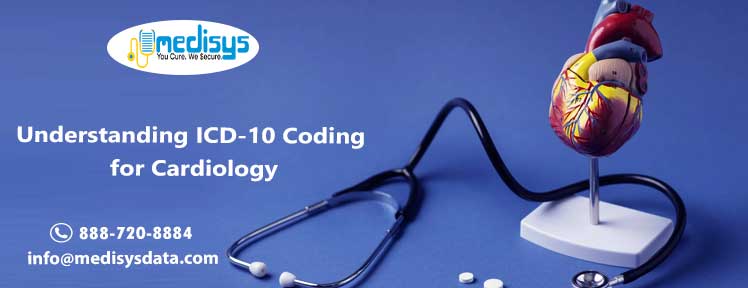Introduction
ICD-10, the 10th revision of the International Classification of Diseases, is a crucial system for coding various diagnoses and procedures in healthcare settings. For cardiologists and medical coders specializing in cardiology, accurate ICD-10 coding is essential to ensure proper billing, avoid claim denials, and maintain compliance with healthcare regulations. This article aims to provide a comprehensive overview of ICD-10 coding specific to cardiology, offering valuable insights and tips for healthcare providers and billing professionals.
Common ICD-10 Codes in Cardiology
Here are some of the frequently used ICD-10 codes in cardiology:
Ischemic Heart Diseases
- I20.0: Unstable angina
- I20.1: Angina pectoris with documented spasm
- I21.01: ST elevation (STEMI) myocardial infarction involving the left main coronary artery
- I21.4: Non-ST elevation (NSTEMI) myocardial infarction
Hypertensive Diseases
- I10: Essential (primary) hypertension
- I11.0: Hypertensive heart disease with heart failure
- I12.0: Hypertensive chronic kidney disease with stage 5 chronic kidney disease or end-stage renal disease
Heart Failure
- I50.1: Left ventricular failure
- I50.20: Unspecified systolic (congestive) heart failure
- I50.30: Unspecified diastolic (congestive) heart failure
Cardiac Arrhythmias
- I48.0: Paroxysmal atrial fibrillation
- I49.01: Ventricular fibrillation
- I49.3: Ventricular premature depolarization
Congenital Heart Defects
- Q20.0: Common arterial trunk
- Q21.0: Ventricular septal defect
- Q21.1: Atrial septal defect
Best Practices for Accurate ICD-10 Coding in Cardiology
Accurate ICD-10 coding is essential for cardiology practices to ensure proper billing, avoid claim denials, and maintain compliance. Here are some best practices to enhance the accuracy of ICD-10 coding in cardiology:
1. Detailed Documentation
Ensure that clinical notes are detailed and comprehensive. They should include all relevant information about the patient’s condition, history, examination findings, and the treatment provided. Use specific descriptions rather than vague terms. For example, instead of just stating “heart failure,” specify “acute systolic heart failure” if that is the diagnosis—document all comorbid conditions and how they affect the patient’s primary cardiac condition.
2. Regular Training and Education
Regularly train healthcare providers and coding staff on the latest ICD-10 updates, guidelines, and best practices. This can include workshops, webinars, and continuing education courses. Employ certified coders who are knowledgeable in cardiology coding. Certifications such as Certified Professional Coder (CPC) or Certified Inpatient Coder (CIC) can be beneficial.
3. Utilize Coding Resources
Use ICD-10-CM coding manuals as a reference to ensure the correct codes are used. Access online coding tools and resources, such as the American Health Information Management Association (AHIMA) or the American Medical Association (AMA) websites. Implement coding software that can assist with code selection and cross-referencing to ensure accuracy.
4. Double-Check Codes
Establish a review process where codes are double-checked before submission. This can involve peer reviews or audits by experienced coders. Maintain audit trails to track coding accuracy and identify any recurring errors or areas for improvement.
5. Stay Updated
Regularly check for updates to ICD-10 codes and guidelines. Subscribe to newsletters or updates from coding organizations. Stay informed about any changes in healthcare regulations that may impact coding practices. Ensure thorough and accurate documentation of the patient’s medical condition and the services provided. This helps coders assign the most specific and accurate ICD-10 codes.
Common Challenges in Cardiology ICD-10 Coding
1. Complexity of Cardiology Conditions
Cardiology encompasses a wide range of conditions and procedures, making accurate coding challenging. Use detailed clinical documentation and coding resources. Encourage cardiologists to provide comprehensive descriptions of diagnoses and treatments. Utilize coding tools that assist in finding the most accurate codes.
2. Frequent Updates in ICD-10 Codes
ICD-10 codes are regularly updated, and staying current can be difficult. So, stay informed about updates through professional organizations, coding webinars, and continuous education. Implement a system to track changes and ensure that staff is aware of and trained on new codes.
3. Lack of Specificity in Documentation
Inadequate or vague documentation can lead to incorrect coding. Encourage detailed and specific documentation practices among healthcare providers. Provide training on the importance of specificity in documentation. Implement documentation templates that prompt for necessary details.
4. Time Constraints
Cardiologists and coders often face time constraints that can lead to rushed or incomplete coding. Streamline the coding process with efficient workflows and coding software. Allocate sufficient time for documentation and coding reviews. Consider hiring additional staff during peak times to reduce the workload.
5. Coordination between Providers and Coders
Effective communication between healthcare providers and coders is crucial for accurate coding. Foster a collaborative environment where providers and coders can communicate easily. Regular meetings or check-ins can help address any documentation or coding issues promptly.
To conclude,
Accurate ICD-10 coding in cardiology is essential for proper reimbursement, compliance, and quality patient care. By understanding the common codes used in cardiology, adhering to best practices, and addressing common challenges, healthcare providers and medical coders can improve their coding accuracy and efficiency. Continuous education and staying updated with the latest coding guidelines are key to minimizing errors and ensuring the financial health of a cardiology practice.
References:












